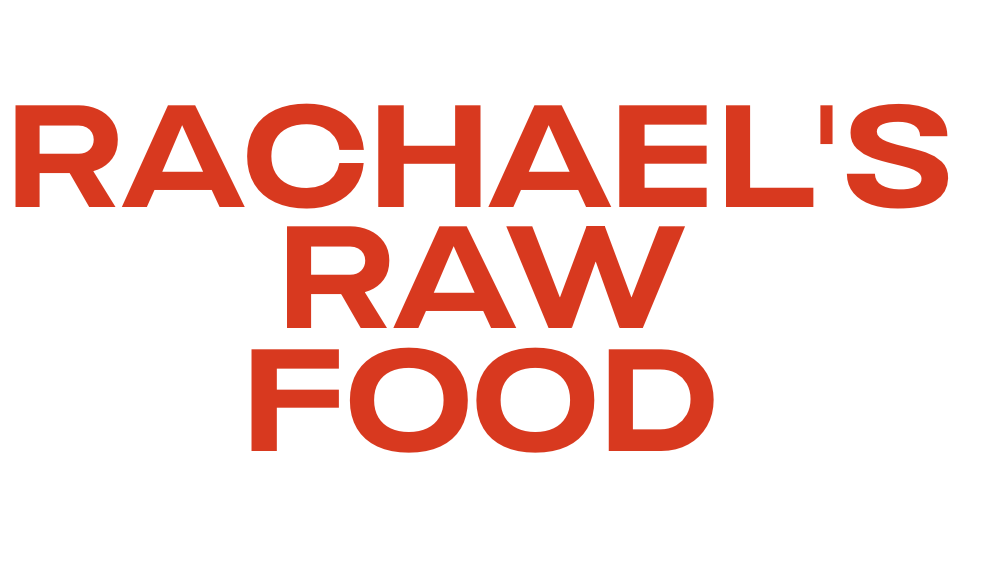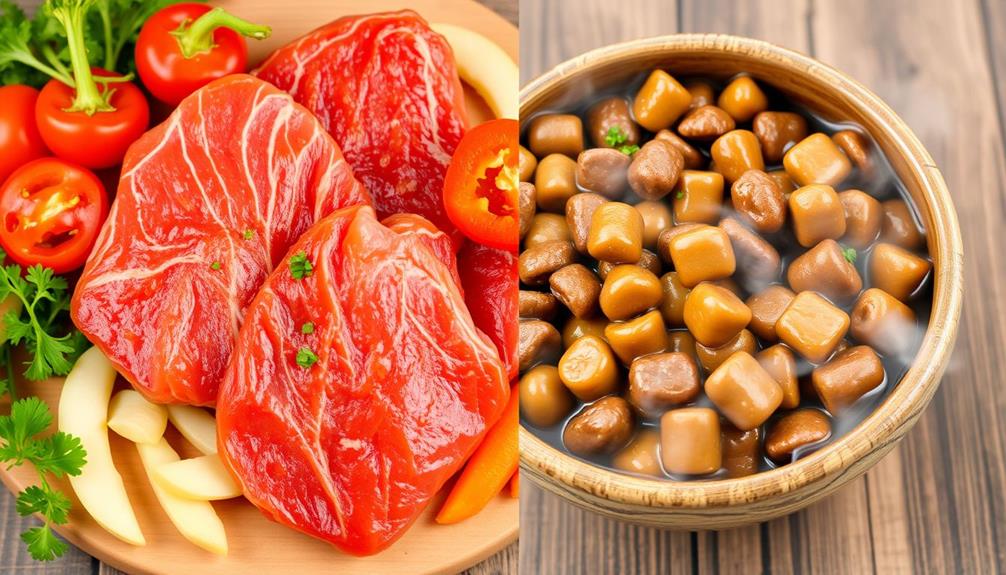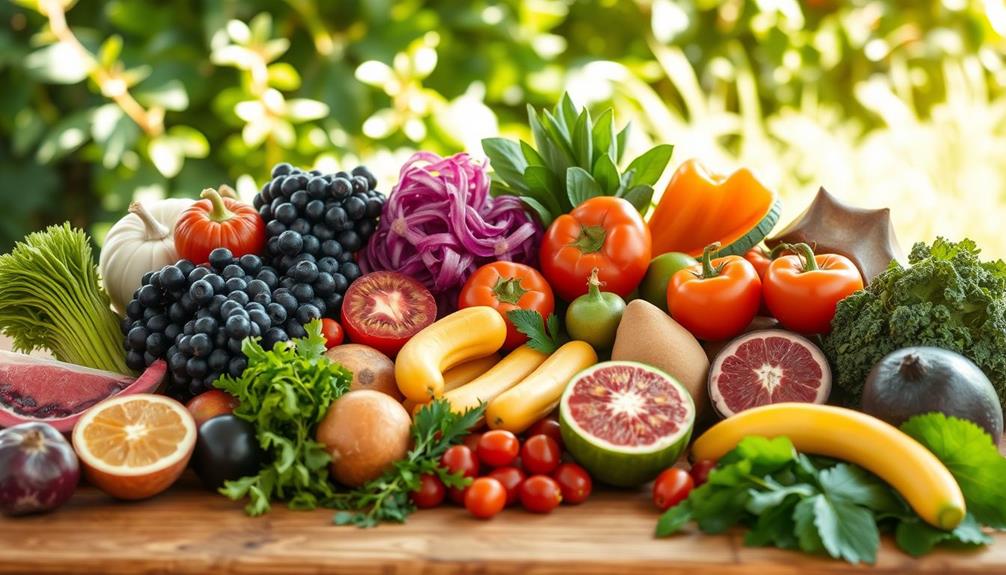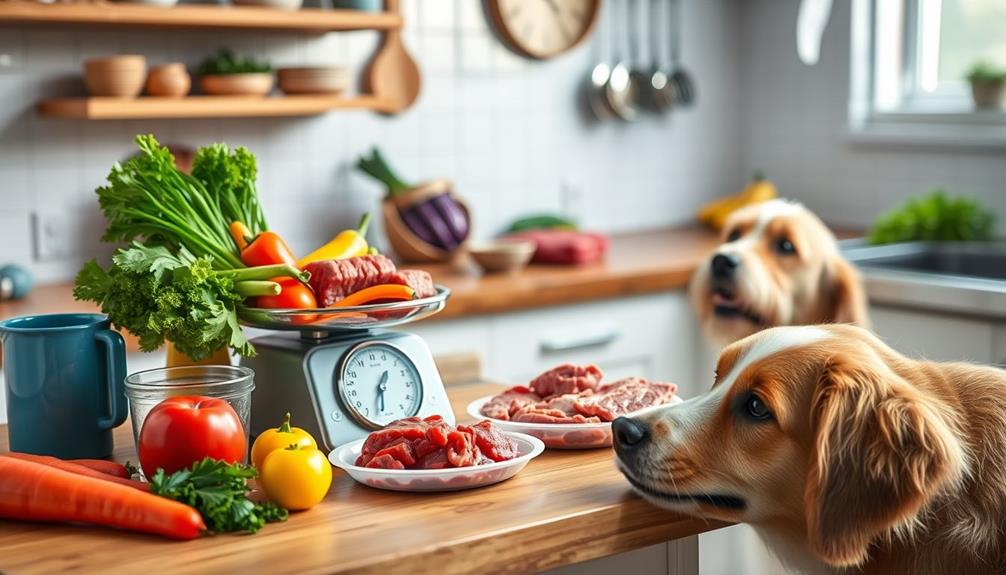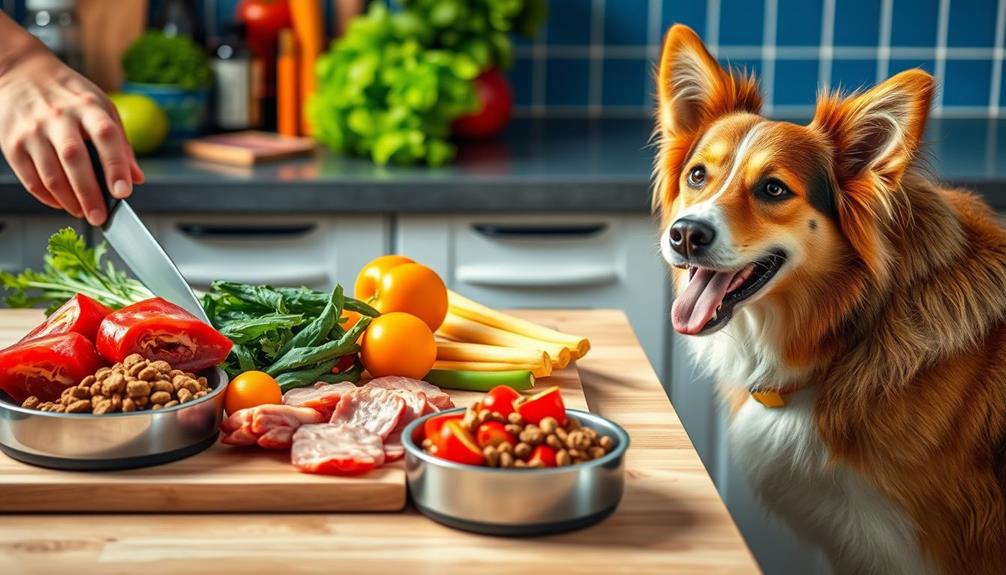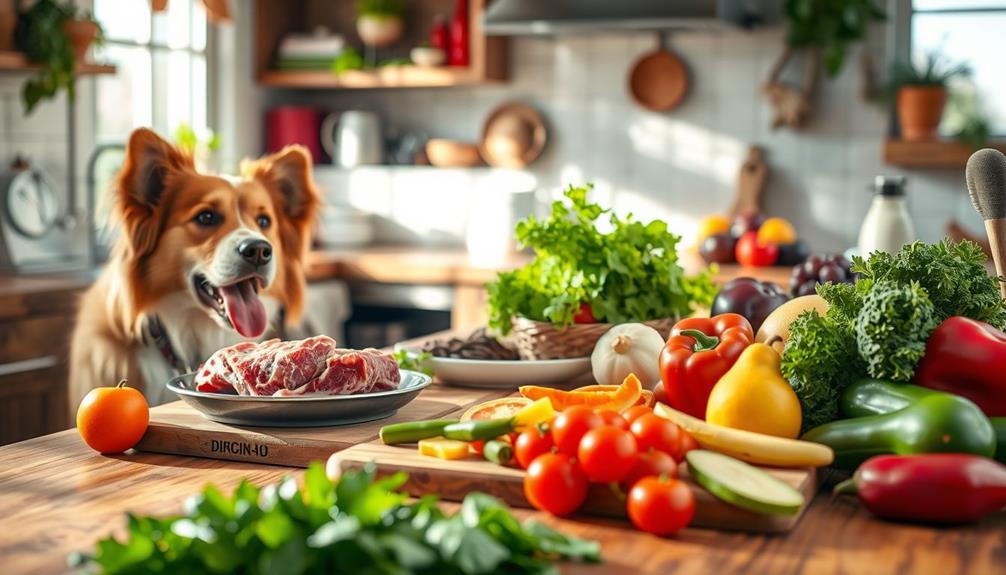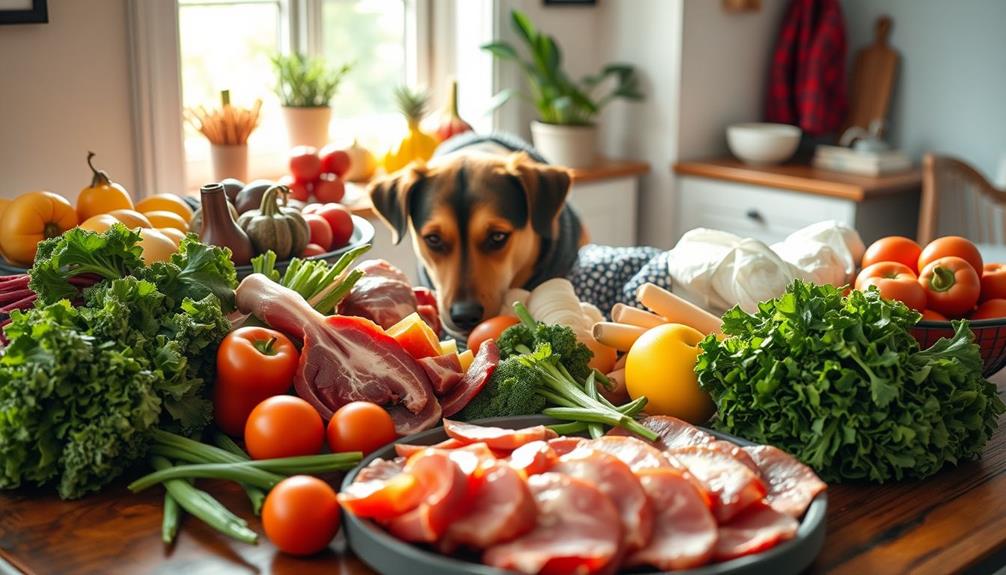When considering what's better for your dog, both cooked and raw diets have their pros and cons. Raw food often boasts higher protein, but it can carry pathogens like Salmonella, posing health risks. Cooked meals provide balanced nutrition and eliminate harmful bacteria, which is safer for dogs with compromised immune systems. Both diets are easier to digest than kibble, but cooked options are generally simpler to handle. Ultimately, your choice should focus on your dog's health needs and your lifestyle. If you're curious about more details on each option, continue exploring the key factors that influence their health and happiness.
Key Takeaways
- Raw food diets often contain higher protein levels, promoting better muscle maintenance and energy.
- Cooked diets eliminate harmful pathogens, reducing the risk of bacterial infections in dogs.
- Both raw and cooked diets support better digestion compared to processed kibble.
- Properly prepared cooked food retains essential nutrients, enhancing overall health and well-being.
- Consulting a veterinary nutritionist is crucial for ensuring a balanced and safe diet for your dog.
Nutritional Value Comparison
When it comes to the nutritional value of dog food, comparing raw and cooked diets reveals some significant differences. Raw food diets often boast higher protein levels, but they may lack essential nutrients unless you properly supplement them. Additionally, it's important to take into account the potential risks associated with raw diets, such as potential side effects from pathogens.
On the other hand, cooked diets for dogs typically offer a more balanced diet, providing a thorough array of vitamins and minerals.
Research shows that both raw and cooked whole food diets are better digested than processed kibble, with no significant difference in the digestibility of raw versus cooked options. Cooking methods, like sous-vide, can minimize nutrient loss while enhancing the digestibility of certain ingredients, making cooked food easier for your dog to absorb.
While raw diets might promote benefits such as healthier skin and coat, they also pose risks of nutritional imbalances and pathogens exposure that cooked diets generally mitigate.
Nutritional adequacy is essential in both raw and cooked diets. Organizations like AAFCO provide guidelines to guarantee that meals meet your dog's complete nutritional needs, helping you make informed choices about their diet.
Safety Risks of Raw Food
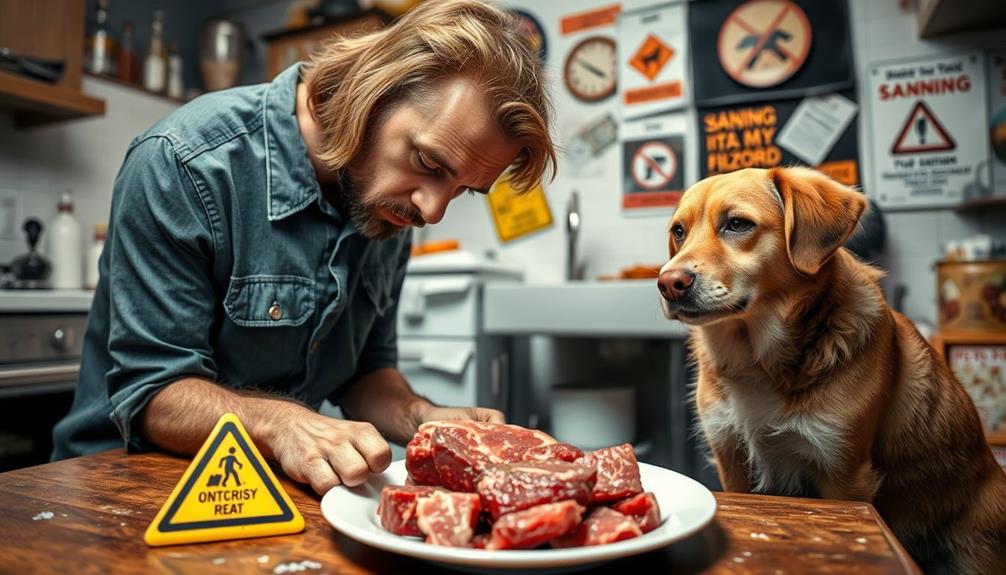
While raw diets can offer certain nutritional benefits, they also come with significant safety risks that pet owners should be aware of. For instance, providing a balanced diet for your dog is essential, and poorly formulated raw diets can lead to nutritional imbalances, meaning your dog might miss out on essential nutrients needed for their health.
Raw food can harbor harmful pathogens such as Salmonella, Listeria, and E. coli, posing health risks not only to your dog but also to your family through cross-contamination. If you have children or individuals with compromised immune systems at home, the risk of bacterial contamination is even higher.
Proper food safety practices are vital when handling raw diets. Always clean surfaces and utensils immediately after use to minimize contamination. Additionally, routine health checks for signs of illness or injury are recommended to guarantee your dog's well-being.
Another concern is the inclusion of bones in raw diets. If not carefully selected and monitored, these can cause serious health issues, such as tooth fractures and gastrointestinal injuries.
In contrast, cooked dog food generally eliminates many of these risks, making it a safer option for pet owners. By weighing the safety risks of raw food against the benefits, you can make a more informed decision for your dog's diet.
Health Benefits of Each Diet

Exploring the health benefits of each diet reveals that both raw and cooked options can enhance your dog's well-being in different ways.
Raw food diets are often praised for promoting healthier skin and coat, improved dental health, and increased energy levels. Many pet owners report noticeable changes in their dogs' health after switching to raw diets, which can also encourage chewing and support dental health.
Additionally, understanding the importance of a proper budget for your pet's nutrition can help you make informed choices about their diet, ensuring they receive the best possible care.
On the other hand, cooked food offers enhanced safety by eliminating pathogens commonly found in raw meat, considerably reducing the risk of bacterial infections like Salmonella and E. coli.
Gently cooked meals can provide similar nutritional benefits to raw diets while ensuring safety, making them a preferred option for those concerned about health risks.
Both raw and cooked diets can support ideal digestion when made from whole food ingredients, leading to better digestibility compared to processed kibble.
Cooked diets may also aid in weight management and are often more palatable for picky eaters.
Ultimately, choosing between raw and cooked food will depend on your dog's specific needs and your lifestyle, but both can contribute positively to your dog's health. Some dogs may thrive on a raw food diet, which can provide them with valuable nutrients and enzymes that might be lost during the cooking process. Raw food for dogs typically consists of uncooked meat, bones, fruits, and vegetables, which can be a valuable source of vitamins and minerals for your furry friend. However, it’s essential to weigh the potential risks of feeding raw food to your dog, such as bacterial contamination, with the benefits before making a decision.
Preparation and Handling Practices
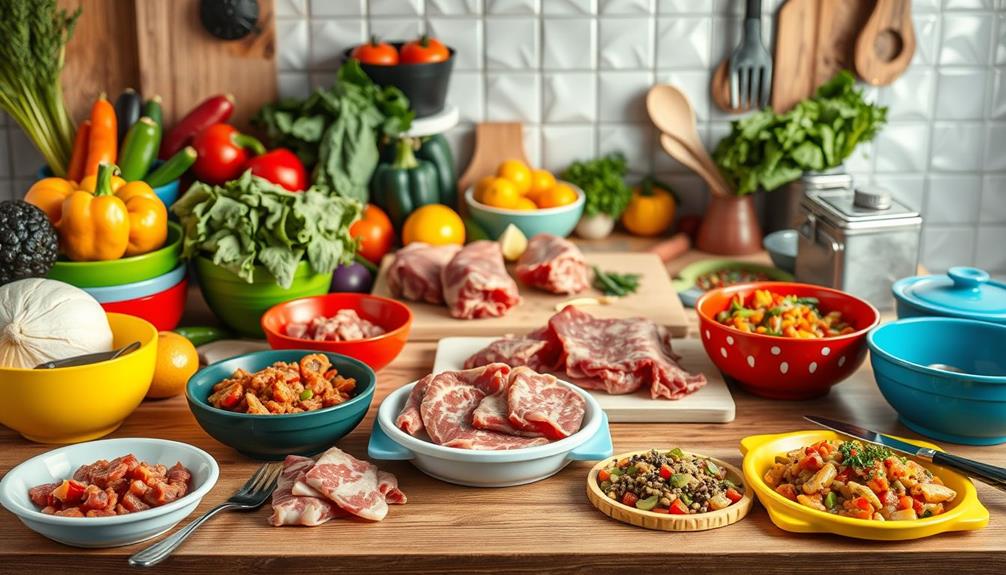
Proper preparation and handling practices are essential for guaranteeing your dog's meals are safe and nutritious. When it comes to raw food, meticulous handling is critical to prevent contamination. Always clean dishes and surfaces immediately after feeding to minimize the risk of pathogens like Salmonella and E. coli.
For cooked food, make certain you cook it to a minimum internal temperature of 65°C (149°F) for at least 12 minutes to eliminate harmful bacteria effectively. Additionally, guaranteeing a clean environment is significant for overall pet health, much like how air purifier maintenance is essential for maintaining good air quality in your home.
Food storage is another essential aspect. Raw food should be frozen to extend its shelf life, while cooked food can be portioned and stored in the refrigerator for a few days. Additionally, if you choose homemade diets, collaborate with veterinary nutritionists to guarantee balanced meal preparation that meets your dog's nutritional requirements.
Both raw and cooked food should be served fresh, and any leftovers from raw meals must be discarded promptly to avoid spoilage and potential health risks. By following these preparation and handling practices, you can help keep your furry friend healthy and happy, regardless of whether you opt for raw or cooked food.
Owner Preferences and Lifestyle Factors
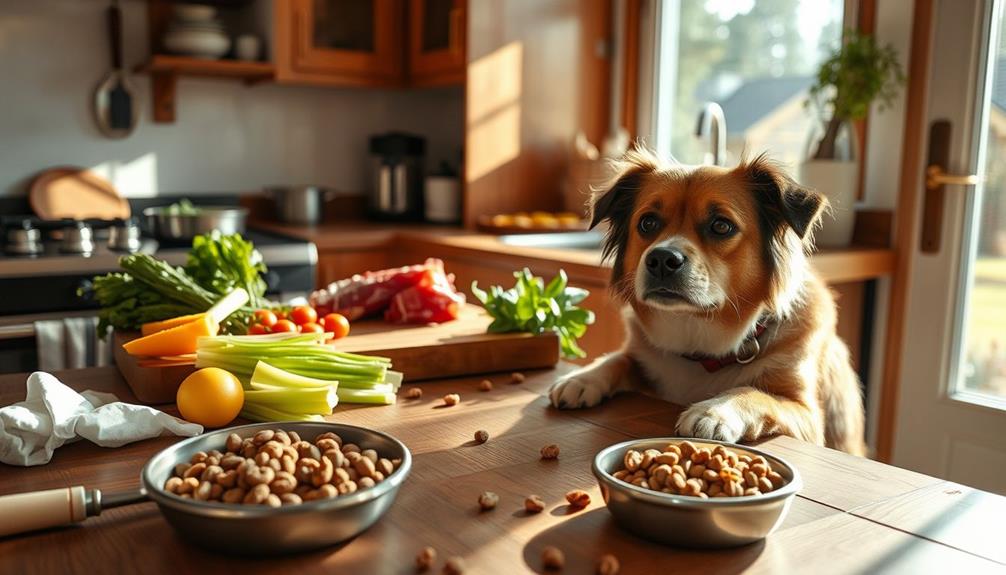
Choosing the right diet for your dog often reflects your personal preferences and lifestyle. Many owners find that their dogs prefer the taste and aroma of cooked diets over raw feeding options. This can greatly influence your decision, as a happy dog makes for a happy owner.
Additionally, understanding the nutritional needs associated with different dog diets can help you make a more informed choice, guaranteeing your pet receives the best care possible. For example, financial considerations for elderly care can parallel the importance of budgeting for your dog's diet and health needs.
Lifestyle factors play an essential role in this choice. If you have a busy schedule, cooked diets might be more convenient, allowing for quicker meal prep and easier storage. Budget constraints also come into play, as cooked options can often be more cost-effective than raw feeding, which may require pricier, fresh ingredients and more preparation time.
Additionally, the availability of fresh ingredients in your area can guide your decision. If local markets offer a variety of affordable produce, you might lean towards cooked meals that incorporate these items.
Understanding Fresh Dog Food
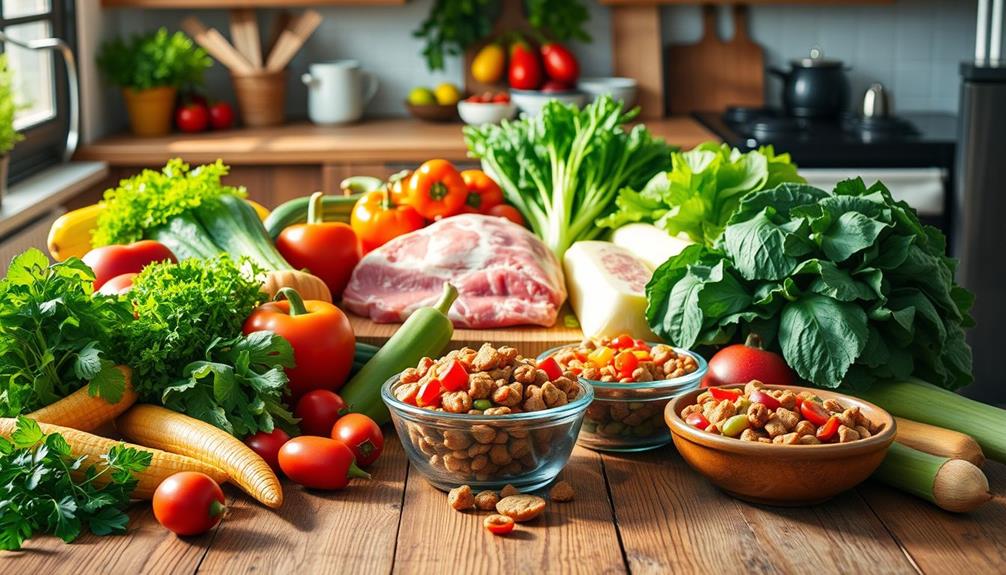
Understanding fresh dog food is crucial for your pup's health and vigor. By incorporating natural ingredients like beef, chicken, and blueberries, you can boost their heart health and energy levels.
Additionally, fresh food can provide antioxidants, similar to those found in Cranberry Juice Consumption, which may support overall well-being.
Plus, knowing how to prepare and store fresh food properly guarantees your dog gets the best nutrition possible.
Nutritional Benefits of Fresh Food
Fresh dog food offers a range of nutritional benefits that can greatly enhance your dog's health and well-being. Unlike processed kibble, fresh dog food typically includes natural ingredients like beef, chicken, peas, and blueberries, providing balanced nutrients that fulfill essential vitamins and minerals.
These ingredients can notably improve your dog's heart health, energy levels, and coat condition. Additionally, incorporating fresh ingredients may help support your dog's immune system, much like how essential oils for respiratory health can promote overall wellness.
Cooking methods like steaming or boiling used in preparing fresh food help maintain nutrient retention and enhance digestibility. This means your dog can absorb essential nutrients more efficiently.
Many fresh food services comply with AAFCO standards, ensuring that the meals are complete and balanced to meet your dog's specific nutritional needs.
To create a well-rounded diet for your dog, consider consulting with veterinary nutritionists. They can guide you in formulating homemade fresh diets that prevent nutritional imbalances and promote ideal health.
Fresh Food Preparation Tips
Preparing fresh dog food at home can seem intimidating, but it doesn't have to be. By following a few fresh food preparation tips, you can create delicious, nutritious meals for your furry friend.
Start by incorporating a variety of natural ingredients, including high-quality meats, vegetables, and fruits, to guarantee balanced nutrition tailored to your dog's needs. Additionally, keep in mind that just like with piercing care and hygiene for humans, maintaining cleanliness during food preparation is essential to prevent contamination.
Here are a few essential tips to keep in mind:
- Choose cooked meat for dogs: Opt for steaming or boiling to retain essential nutrients.
- Consult a veterinary nutritionist: They can help you develop recipes that meet AAFCO standards, ensuring your dog gets all necessary vitamins and minerals.
- Store food properly: Use airtight containers to keep meals fresh and consume them within a few days.
If you find meal prep intimidating, consider using fresh food subscription services. These services offer customizable meal plans and ingredient transparency, making it easier to provide a nutritious diet for your dog.
Evaluating Raw Diet Components
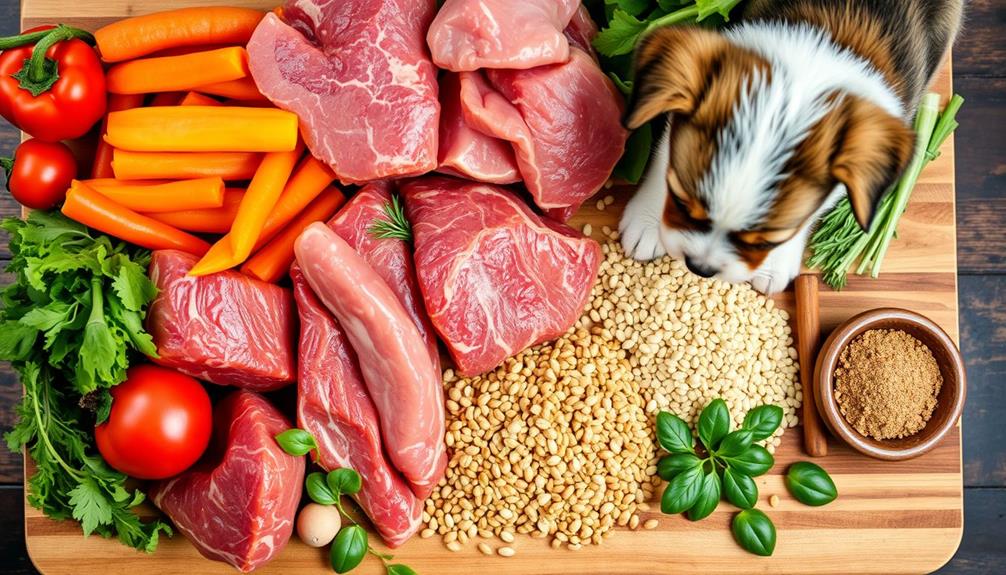
When evaluating raw diet components for your dog, you need to take into account nutritional balance, ingredient quality, and pathogen safety risks.
It's important to verify that the diet meets all of your dog's nutritional needs while being cautious about potential contaminants.
Additionally, some pet-friendly ice creams are available, which can be a fun treat for your dog in moderation, but always consult your veterinarian before introducing new foods into their diet ice cream health risks.
Nutritional Balance Considerations
A balanced raw diet for your dog requires careful consideration of various components to guarantee nutritional adequacy. When formulating a raw diet, you should prioritize the following elements to avoid potential nutritional imbalances:
- Variety of protein sources: Incorporate muscle meat, organ meats, and bones to guarantee your dog gets essential amino acids and fatty acids. Providing high-quality protein sources can improve your dog's energy levels and overall health, which is vital for active breeds like Dalmadoodles healthy dog snacks.
- Calcium and phosphorus: Guarantee the right meat-to-bone ratio to prevent deficiencies that can arise from improperly balanced meals.
- Dog-safe fruits and vegetables: Include these to add vitamins, minerals, and fiber, but make sure to research which options are safe for your dog.
Consulting a veterinary nutritionist can be invaluable in crafting a balanced raw diet tailored to your dog's specific needs.
Keep in mind that monitoring your dog for any adverse reactions to the raw food is essential. Individual health issues may require diet adjustments to maintain proper nutritional balance.
Pathogen Safety Risks
Raw dog food can pose serious pathogen safety risks, with harmful bacteria like Salmonella, Listeria, and E. coli lurking in uncooked ingredients. These pathogens not only threaten your dog's health but also pose risks to humans, especially in households with vulnerable individuals.
While dogs generally have strong immune systems that can handle certain bacteria, caution is essential for those with compromised defenses or existing health issues.
To minimize the chances of foodborne illness, it's important to practice safe handling techniques when preparing raw dog food. This includes thoroughly sanitizing surfaces and utensils after use to prevent cross-contamination.
Cooking meat to at least 65°C for a minimum of 12 minutes effectively eliminates many harmful pathogens, greatly reducing health risks.
Both the American Veterinary Medical Association (AVMA) and the FDA have expressed concerns about the use of raw ingredients in pet food due to potential contamination.
If you're considering a raw diet for your dog, stay informed about these risks and be diligent with safe handling practices. Remember, the health of your furry friend—and your household—depends on it.
Ingredient Quality Importance
To guarantee your dog thrives on a raw diet, prioritizing ingredient quality is fundamental. When evaluating raw diet components, you need to verify the meat comes from USDA-certified suppliers. This helps you avoid the risks associated with non-certified ingredients.
High-quality raw diets should provide a balanced mix of:
- Muscle meat
- Organ meats
- Dog-safe fruits and vegetables
These components are critical for delivering essential nutrients. Transparency is also important; choose brands that clearly list their ingredients and avoid those using rejected carcasses or vague labeling. Fresh, whole ingredients enhance nutrient digestibility, making them preferable to processed kibble.
Additionally, consulting a veterinarian or a pet nutritionist can help you confirm that the raw diet is nutritionally balanced and tailored to your dog's specific health needs.
Kibble: Pros and Cons
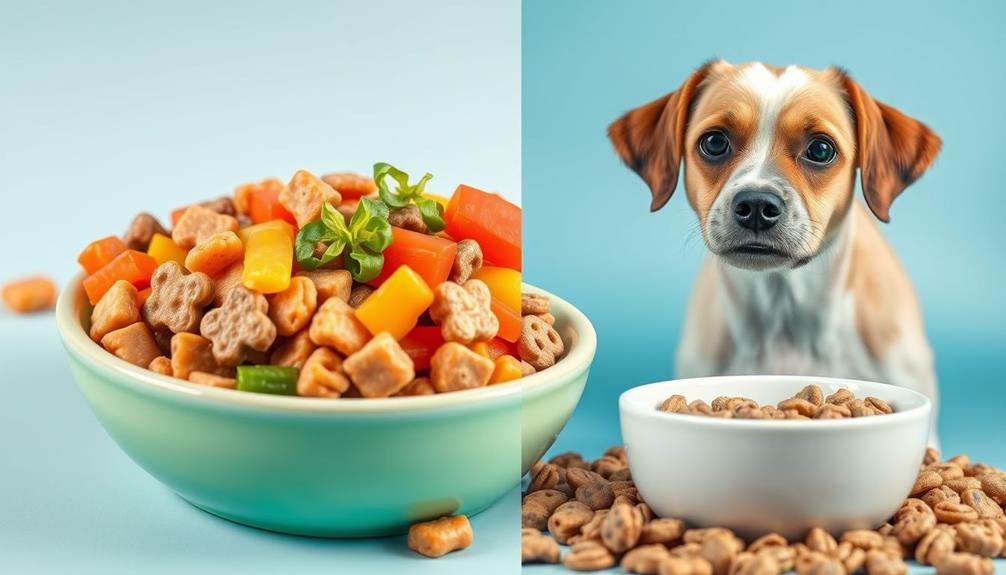
When it comes to choosing a diet for your dog, kibble offers a mix of benefits and drawbacks that every pet owner should consider. Kibble is designed to provide complete and balanced nutrition for your dog, meeting USDA regulations for safety and necessary vitamins and minerals. Its dry texture can also help reduce dental plaque, promoting better oral hygiene.
Plus, kibble is cost-effective and convenient, with a longer shelf life than fresh or raw diets.
However, not all kibble is created equal. Some brands may include low-quality ingredients, fillers, and added sugars, which can be harmful to your dog's health. If your dog has sensitivities to grains or low-quality ingredients, it's important to select high-quality brands that use human-grade ingredients.
When considering cooked vs raw diets, kibble can be a practical choice, but it's vital to be mindful of potential pathogens that may exist in lower-quality products.
Ultimately, weighing the pros and cons of kibble will help you make an informed decision about your dog's diet, ensuring they receive the best nutrition possible.
Digestibility Insights
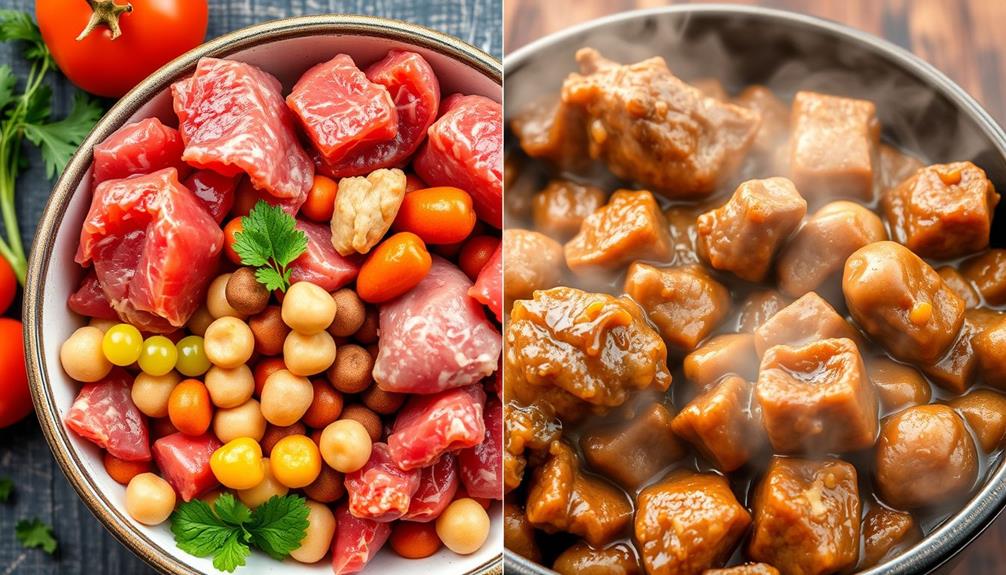
Taking into account your dog's health, digestibility plays an essential role in their diet. When you choose between raw dog food diets and cooked options, it's vital to understand how each affects nutrient absorption. Studies show that both raw and cooked whole food diets offer better digestibility compared to processed kibble. This means your dog can enjoy higher protein digestibility and better access to essential nutrients.
Here are some digestibility insights to bear in mind:
- High-quality ingredients: Fresh food, whether raw or cooked, maintains its nutritional integrity, ensuring your dog gets the most out of their meals.
- Consistent digestibility: Ingredients in raw diets remain digestible before and after cooking, making both methods beneficial when formulated correctly.
- Natural bioavailability: Dogs generally digest whole food ingredients more efficiently, which enhances nutrient absorption and overall health.
Ultimately, whether you opt for cooked food easier or stick with raw, both can provide significant benefits. By focusing on high-quality, whole food diets, you're likely to support your dog's health and well-being more effectively.
Making the Right Choice
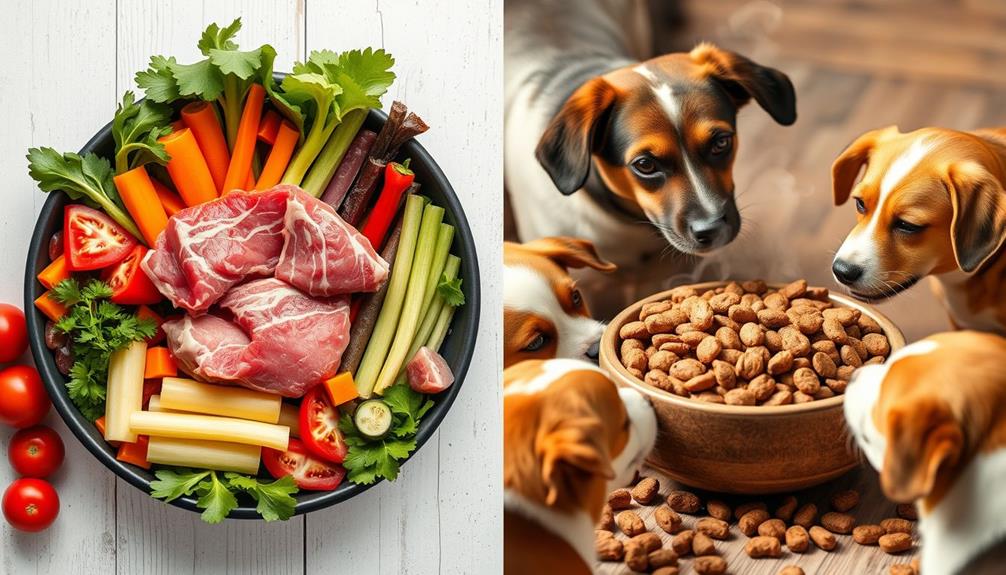
Choosing the right diet for your dog can be a complex decision influenced by their individual needs and health concerns. When considering raw versus cooked food, understanding the pros and cons of each option is key. Both diets can offer better nutrition than processed kibble, but safety and health risks differ considerably.
| Aspect | Raw Diet | Cooked Diet |
|---|---|---|
| Nutrition | High in natural nutrients | Cooked nutrients may be lower |
| Digestibility | Generally easier to digest | Also easy to digest |
| Safety | Higher risk of pathogens | Safer due to cooking |
| Preparation | Requires careful handling | Easier to prepare and handle |
| Health Monitoring | Needs close observation | Monitor for reactions |
Consulting with a veterinarian or veterinary nutritionist is essential for creating a balanced diet tailored to your dog's specific needs. If you have vulnerable family members, cooked food may be a safer choice. Regardless of the diet you choose, monitor your dog's health during the change, as individual tolerance can vary. Ultimately, the right diet should prioritize your dog's nutrition, health, and safety.
Frequently Asked Questions
Is a Raw or Cooked Diet Better for Dogs?
When deciding between a raw or cooked diet for your dog, consider safety and digestibility. Cooked meals often reduce pathogen risks, while raw options might enhance coat health. Balance and consultation with a vet are essential.
Do Vets Recommend a Raw Diet for Dogs?
Oh sure, let's just serve Fido a raw steak and see what happens! Most vets don't recommend raw diets, citing health risks and nutritional imbalances. They'd rather you stick to cooked options, trust me.
What Is the Healthiest Food to Feed Your Dog?
To guarantee your dog's health, focus on high-quality proteins, crucial vitamins, and minerals. A balanced diet, whether cooked or raw, tailored to their needs, will promote overall wellness and energy while preventing potential health risks.
Can I Feed My Dog Cooked Meat Everyday?
Yes, you can feed your dog cooked meat every day, but make certain it's balanced with vegetables and grains. Avoid harmful seasonings, and consult your vet to ascertain it meets your dog's nutritional needs.
Conclusion
In the age-old debate of cooked versus raw, the choice ultimately lies in your dog's unique needs and your lifestyle. Just like choosing between a classic novel and a thrilling page-turner, both options offer distinct benefits. Cooked food provides safety and convenience, while raw diets can boost energy and flavor. Trust your instincts, do your research, and consult your vet. After all, every pup deserves a tail-wagging meal that suits them best!
